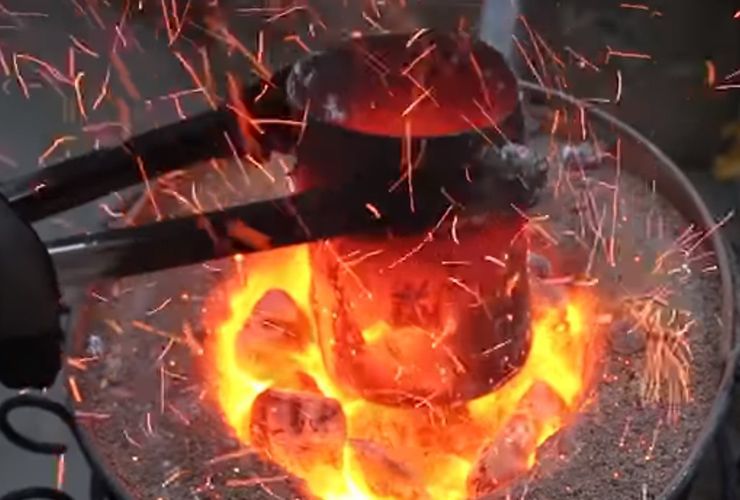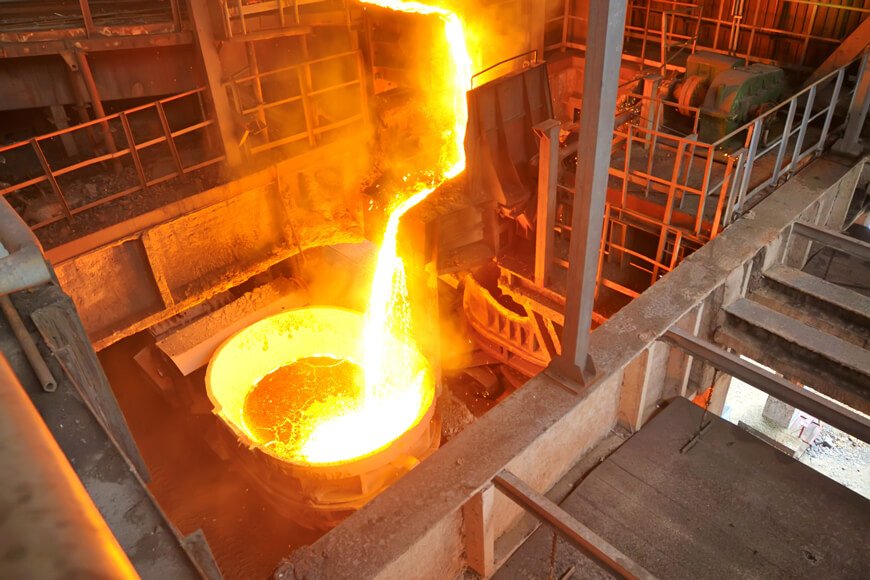Definitive resource to sustainability practices in the Metal Foundry industry
Wiki Article
Introducing the Complexities of Design and Production at a Metal Foundry
The style and production procedures at a metal foundry involve a series of complex steps. Each stage, from selecting basic materials to melting and spreading, plays an essential duty in the end product. Aluminum Casting. Accuracy and high quality control are extremely important in this market. Yet, as modern technology developments, new innovations are arising. These developments might redefine typical practices. What ramifications do these changes hold for the future of metal foundries?The Melting Process: Turning Raw Materials Into Fluid Metal
The melting process acts as the vital primary step in transforming raw products into fluid metal, a treatment crucial for foundry operations. This phase begins with the careful option of metals, which may consist of aluminum, copper, or iron, relying on the wanted end product. Each material is assessed for purity and structure to guarantee ideal melting problems.
As the metals reach their melting factor, they convert from solid to fluid, permitting for additional refinement. This procedure can also consist of the elimination of pollutants through slag development, ensuring the top quality of the liquid metal. Inevitably, the successful conclusion of the melting process lays the structure for succeeding metalworking procedures.
Molding Methods: Shaping Metal With Accuracy
Following the melting procedure, the following stage in steel foundry operations entails molding methods that form the liquid metal right into wanted forms. Different approaches are utilized, each picked based on the particular requirements of the task. Sand spreading, among the most usual methods, utilizes a mixture of sand and binder to create mold and mildews that can be conveniently shaped and recycled. An additional method, investment spreading, involves producing a wax pattern that is covered in a ceramic covering, enabling detailed designs and high precision.Pass away spreading, on the other hand, makes use of high-pressure to inject molten metal right into steel mold and mildews, causing resilient and consistent products. In addition, the selection of molding method impacts the cooling rate, surface area coating, and dimensional accuracy of the final product. Subsequently, understanding these techniques is necessary for maximizing layout and making sure the successful manufacturing of steel elements customized to specific applications.
Casting Techniques: From Prototype to Production
Various spreading methods are employed in metal shops to shift from prototype development to major manufacturing. Amongst these techniques, sand spreading stands apart for its adaptability and cost-effectiveness, making it perfect for both large and small production runs. Financial investment spreading, understood for its accuracy, is typically used for intricate geometries, enabling great details in the end product. Pass away spreading, ideal for high-volume production, uses liquified metal infused right into molds, giving superb surface area coating and dimensional accuracy.
Quality Assurance: Guaranteeing Excellence in Every Pour
While the casting process can differ substantially in between techniques, maintaining rigorous quality control is important to identify that every put fulfills the needed standards. Quality control in a metal foundry includes a series of organized checks and examinations developed to identify flaws early in the production process. This includes careful assessments of resources, monitoring of melting temperatures, and analyses of mold and mildew integrity.Foundry personnel employ different screening techniques, such as non-destructive testing and dimensional verification, to establish that spreadings attain desired requirements. Furthermore, adherence to established market standards and certifications boosts the dependability of the end product.
Feedback loopholes are also critical; any type of inconsistencies kept in mind during high quality assessments are assessed to improve processes and reduce future mistakes. Eventually, a culture of quality control fosters not only customer satisfaction however likewise a track record for quality in the competitive landscape of metal production.
Developments and Technologies: The Future of Metal Foundries
The landscape of steel foundries is quickly evolving, driven by improvements in modern technology and ingenious practices. Automation and robotics are changing traditional process, improving performance and accuracy throughout manufacturing. Automated pouring systems and robot arms reduce human error, bring about better outcomes. In addition, the assimilation of expert system is enabling predictive maintenance, enhancing tools efficiency, and reducing downtime.Additive production is becoming a game-changer, permitting for quick prototyping and the production of complex geometries that were previously unattainable. This innovation helps with the modification of steel components, accommodating certain customer demands without substantial time delays.
Sustainability is also a crucial focus, with factories taking on greener methods, such as reusing scrap metal and making use of energy-efficient heating systems. These advancements not just enhance productivity however likewise line up with global efforts in the direction of eco liable production, ensuring the future of steel shops stays robust and competitive in a transforming commercial landscape.
Frequently Asked Questions
What Types of Metals Are Typically Used in Factories?
Common metals made use of in shops consist of light weight aluminum, cast iron, brass, bronze, and steel (Metal Casting). Each metal has one-of-a-kind buildings, making them appropriate for various applications in sectors such as automobile, aerospace, and browse around this site building, to name a fewExactly How Do Foundries Take Care Of Waste and Environmental Effect?
Shops take care of waste and environmental influence by executing reusing programs, using innovative filtration systems, and sticking to strict regulative standards. They usually purchase lasting modern technologies to decrease emissions and promote accountable resource use throughout their operations.What Security Measures Are in Area for Employees?
Foundries carry out various security actions for employees, consisting of personal protective tools, proper air flow systems, normal safety training, emergency situation response procedures, and rigid adherence to work wellness regulations to reduce dangers related to hazardous browse around here products and tools.How much time Does the Whole Manufacturing Process Usually Take?
The entire production procedure usually takes numerous weeks, relying on the intricacy of the design and the materials made use of. Aspects such as mold and mildew preparation, melting, and cooling time significantly influence the general period of production.What Are the Main Tests Dealt With by Metal Factories Today?
Metal shops today face challenges such as rising material prices, fluctuating need, environmental guidelines, experienced labor shortages, and keeping quality assurance. These problems make complex manufacturing effectiveness and productivity in an increasingly open market.The style and production processes at a metal foundry entail a collection of detailed actions. The melting procedure serves as the important very first step in transforming raw materials into liquid metal, a treatment crucial for foundry procedures. Adhering to the melting procedure, the following stage in steel foundry operations includes molding strategies that shape the liquid steel right into wanted forms. Many casting methods are used in metal foundries to change from prototype growth to full-blown production. Quality control in a metal foundry incorporates a collection of systematic checks and evaluations created to determine defects important site early in the manufacturing process.
Report this wiki page